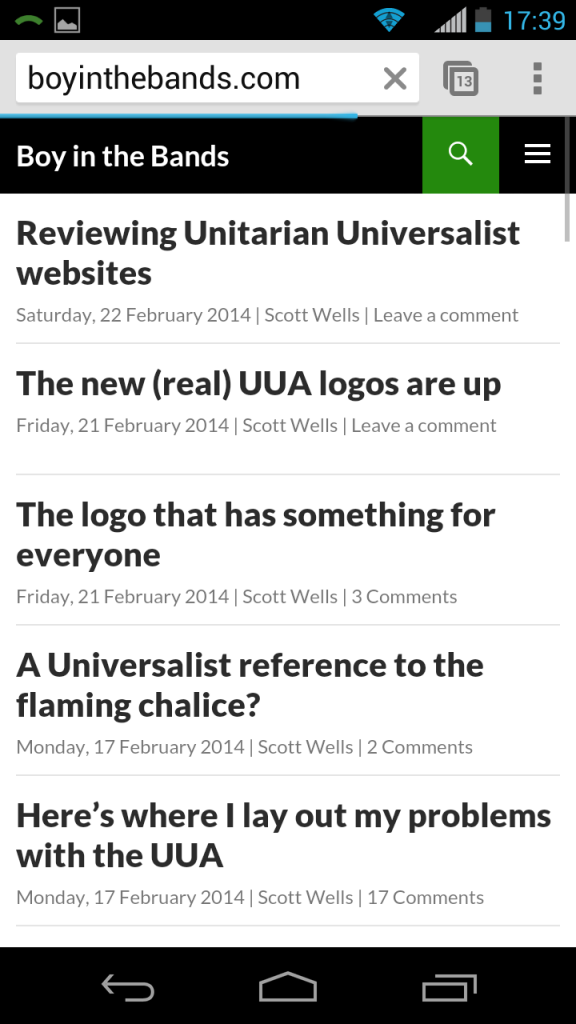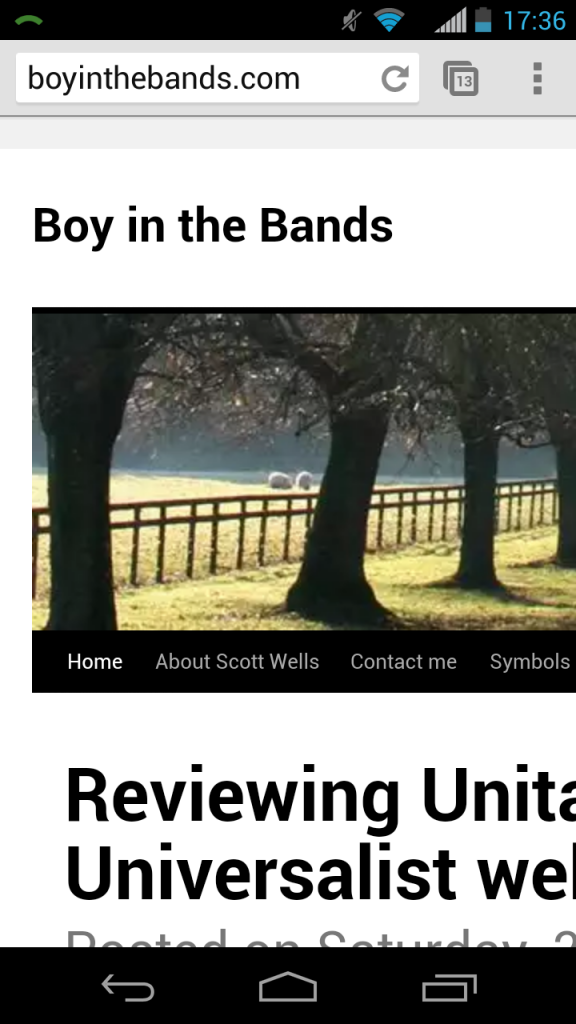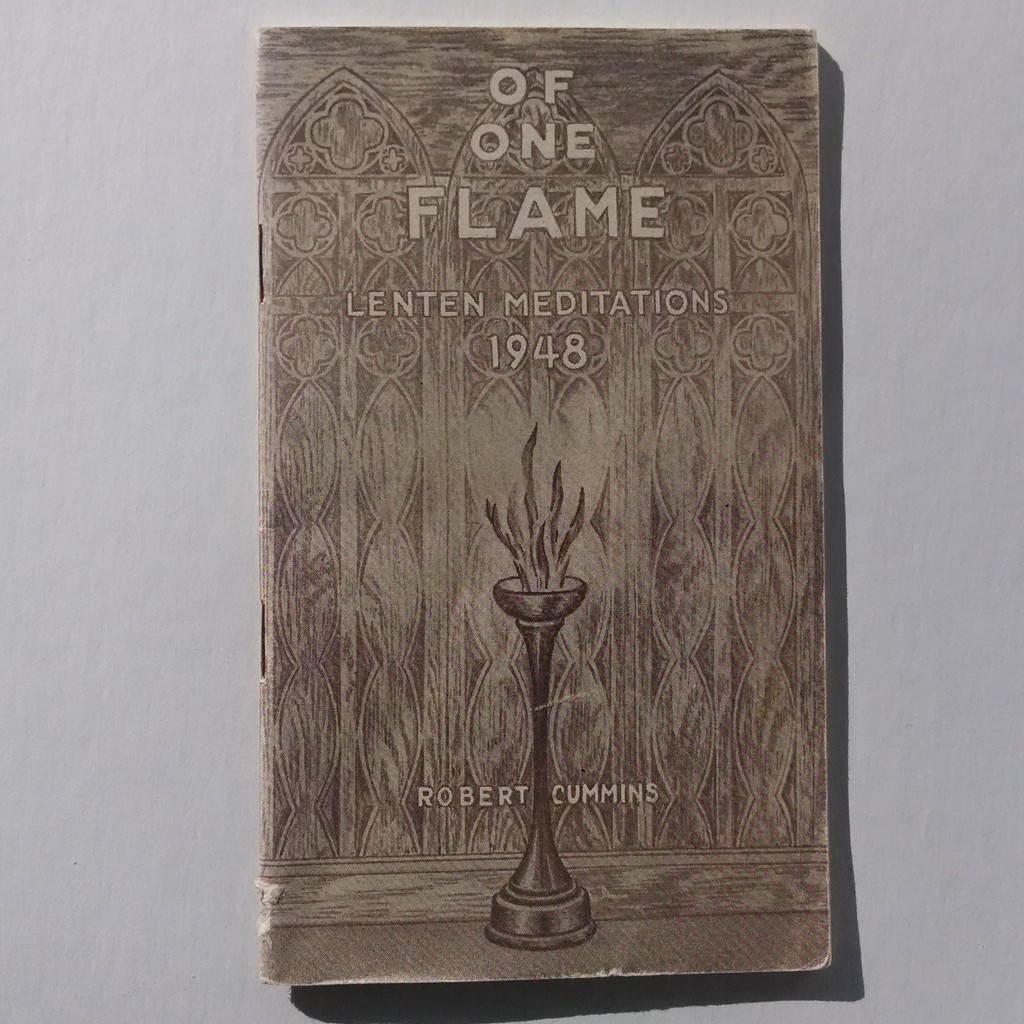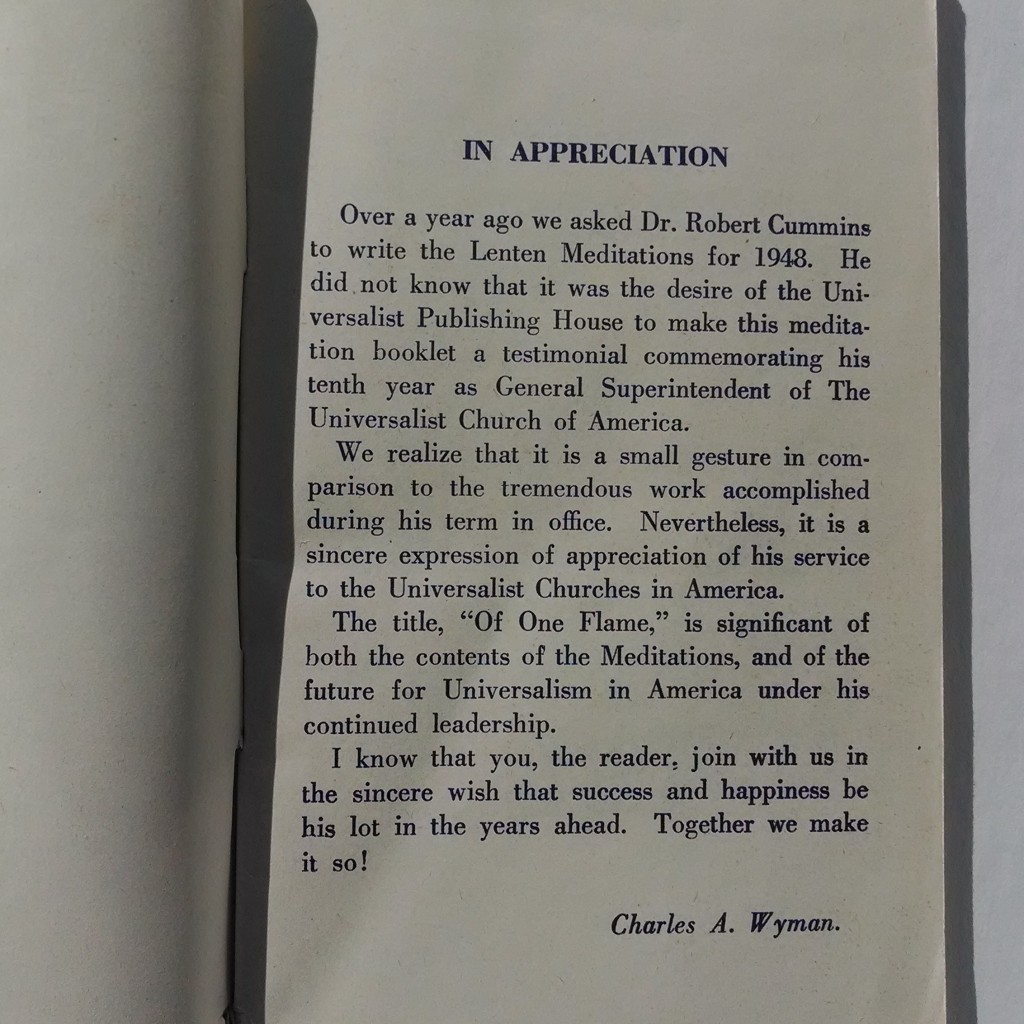This is the first part of a (surely long and rambling) series on findings from Universalist records at Harvard Divinity School’s library archives. My thanks to Fran O’Donnell and Jessica Suarez of the Andover-Harvard Theological Library for making my visit possible. I love combing through these Hollinger boxes. Evidence of Yankee thrift abounds. Serious business — which today would be shipped by courier or with tracking numbers, or protected with encryption — went by typed postcard. But one of their habits — one I share — revealed some glorious relics. Make old print jobs into scrap paper; the other side has a use you know. So mundane memos preserve scraps of design choices. Here are a couple I caught.
Category Archives: Design and typography
Public-domain off-center cross
With due respect to the designer of the off-center cross here, this one — with thinner lines and a smaller cross; I made it about as high as the circle radius — looks more like the ones I’ve seen used by mid-century post-Christian Universalists. Its later, and I think unintentionally ironic, adoption by Christians notwithstanding.
For Universalist Christianity, I’d suggest an anchor or heralding angel as more appropriate, but that’s for later.
In the spirit of the original, I also dedicate these graphic files to the public domain.
The public domain declaration applies to the ready-to-use PNG and the better-for-making-derivative works SVG, downloadable below.
To the extent possible under law, Scott Wells has waived all copyright and related or neighboring rights to off-center-cross_thinner-10px_cross-radius_300px.png. This work is published from: United States.
To the extent possible under law, Scott Wells has waived all copyright and related or neighboring rights to off-center-cross_thinner-10px_cross-radius.svg. This work is published from: United States.
Observations from the Unitarian Universalist website scan
Some notes from my quick survey of Unitarian Universalist websites. This speak to the broad middle in quality; I’ll be writing about the really amazing ones and some deeply problematic habits another time.
- Second Unitarian, Chicago, which uses Potanto Sans
- Sacred Journey Fellowship, Garland, Texas, which uses Yanone Kaffeesatz and Droid Sans (yes, like on a phone)
- Community Church of North Orange and Tully, Massachusetts
- Red Hill Universalist Church, Clinton, N.C.
- Outlaw’s Bridge Universaist Church, Seven Springs, N.C.
Mozilla style guide inspiring to read
With all the recent talk about the new Unitarian Universalist Association visual standard, it was a pleasure to run across another way of approaching the task. Mozilla, who produces the popular Firefox browser, has its entire style guide available for review on its website. You can also download its open-source standard font, Open Sans. It’s full of interesting design choices, and it just makes me feel better about Firefox.
The whole suite might inspire a design-forward congregation to adopt similar parts of a standard for its own branding. A cmmon font free to share would be a plus, and congregations would also benefit from templates for often-used documents.
Double circle symbol for you to use
OK, the flaming nectarine was a bit of fun, but here’s something that might be more useful. The linked, double circles are an older emblem of the Unitarian and Universalist consolidation, and deserve some attention, at least in “communion of the churches” settings. It uses the gradient standard of the new UUA visual identity.
You are welcome to use, modify and share this symbol, even commercially, provided you acknowledge me. This licence applies to the ready-to-use PNG and the better-for-making-derivative works SVG, downloadable below.
You may acknowledge me in words or by a link back to this particular post.
If in words, and because it is a small symbol, the acknowledgment may be inconspicuous, on a colophon or acknowledgements page, or in an alt tag.
Please use this form: CC-BY Scott Wells

Double ring symbol by Scott Wells is licensed under a Creative Commons Attribution 4.0 International License.
Based on a work at http://boyinthebands.com/wp-content/uploads/2014/02/dual-rings_gradient.png.

Double ring symbol by Scott Wells is licensed under a Creative Commons Attribution 4.0 International License.
Based on a work at http://boyinthebands.com/wp-content/uploads/2014/02/dual-rings_gradient.svg.
This blog in five themes, on my phone
So, continuing the thread about the “twenties” default WordPress themes, I thought I’d see what this blog would look like in an untouched version, Twenty Ten to Twenty Fourteen. (I’ve already tweeked Twenty Thirteen for this blog, and while I adore each of you, I’m not reverting it for this blog post.)
I chose this blog so I wouldn’t be thought to be picking on (or praising) a particular congregation. Will pick up on what this may mean later.






Reviewing Unitarian Universalist websites
For the last three days, I’ve made quick-and-dirty survey of all Unitarian Universalist congregational websites. Most are acceptable, if improvable. Some very good. But too many are homely, underpowered or just plain ugly. About 18 are down or broken, at least right now. Two or three have let their domains expire. And some congregations have no web presence at all. And what about mobile devices?
As I go through the hundreds of websites — getting an impression of the front pages — I’m sorting some of them into the following categories:
- The very basic (though not necessarily bad)
- The shockingly ugly (though perhaps technologically serviceable)
- Those which use very slightly altered WordPress default templates
- Lost or non-loading sites
In addition I’ve been taking notes; I’ve found three examples of the new UUA logo already in use, in case anyone was curious. One. Two. Three.
Without embarrassing any particular congregation (but I might praise a couple) I’ll report on what I found later. An actionable step away our too-common culture of shabbiness.
The new (real) UUA logos are up
Along with a (partial?) rollout of the new identity at UUA.org, you can download the new logos at the following page: http://uua.org/communications/art/uuachalice/index.shtml
I wish the permitted usage was clearer. A copy of the identity standard would be helpful, too.
Here’s a (there are others) monochrome version, in case you’re curious, scaled at 20%
The logo that has something for everyone
A Universalist reference to the flaming chalice?
So, historic hashing of prior iterations and influences of the flaming chalice symbol has been going on on Facebook. No place to have a public conversation, so when the “it’s a Unitarian (not Universalist) thing” card got thrown, I knew I had to chime in and thus blog about it.
I’m no fan of the flaming chalice symbol, and so I’ve kept this tidbit to myself. Years ago, back when I still lived in Georgia, the widow of a former Universalist minister sought me out to receive some of her husband’s collection of Universalist ephemera.
In it was this Lenten meditation manual from 1948.
In case you don’t recognize the author’s name and want proof of its Universalist provenance.
Oh, and lookie there, as I read on. No copyright notice. It’s fallen into the public domain. Might have to do something with that.










